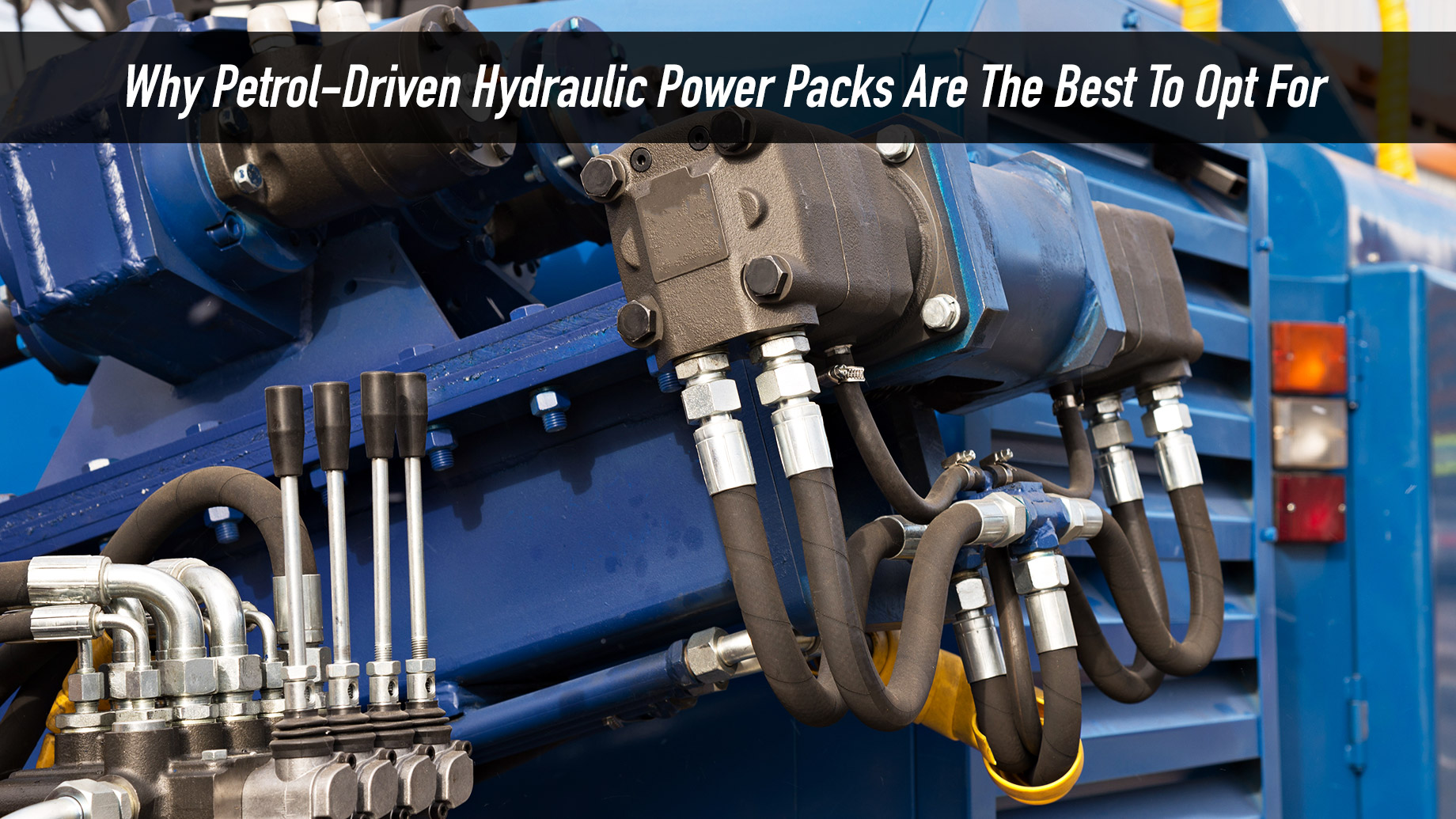
A hydraulic power pack is a self-contained unit comprising a drive motor, hydraulic pump, and hydraulic fluid tank. The pump, driven by the motor through a connecting shaft, can be mounted either atop the tank or within it, immersed in oil. The system’s tank size, withdrawal, feed, and critical flow rates are configured based on the specific job and application requirements, with the extracted volume determined by the size of the consumers and the total fluid needed in the hydraulic system.
For these systems’ optimal performance and longevity, selecting high-quality components is crucial. This includes reliable hydraulic hoses, as well as durable valves, and precision-engineered fittings. These elements are critical in maintaining the system’s integrity, ensuring efficient operation, and preventing leaks. The linchpins allow hydraulic power packs and related equipment to operate safely and effectively in various conditions.
Hydraulic systems, used in equipment like hydraulic jacks, wheelchair lifts, backhoe arms, hydraulic presses, and components in airplanes and boats such as wing flaps and rudders, operate on a universal principle. Take a hydraulic jack as an example: it elevates heavy loads by a pump plunger driving oil through two cylinders. Pulling back on the plunger opens a suction valve ball, allowing fluid into the pump chamber. Pushing the plunger forward forces the fluid through an external discharge check valve into the cylinder chamber, creating pressure.
How does it work?
The warming of the fluid, as well as potential leaks, must be considered here. At the lowest diameter, the critical flow speed occurs. The pump is powered by an electric motor, which transforms electrical energy into hydraulic energy. This is also known as the generation of hydraulic pressure and the provision of a flow rate. This may be utilized for driving in machines by using connections.
There are three types of petrol-driven hydraulic power packs based on their design: conventional hydraulic power packs, oil-immersed hydraulic power packs, and small hydraulic power packs. The electric drive is incorporated directly into the tank in oil-immersed hydraulic power packs (A submerged motor). This allows for extremely tiny external dimensions for the power pack. Because the electric drive is immersed in hydraulic oil, the heat lost by the motor is transmitted to the oil. If the switch-on time is too long, the oil temperature may rise to an unacceptably high level. The electric drive is typically flange-mounted on the outside of the tank in a small petrol-driven hydraulic power pack.
Hydraulic Power Pack Products
JEA2-9 Petrol Power Hydraulic Torque Wrench Pump
- The JEA2-9 is a 10000 psi petrol-powered hydraulic pump designed for hydraulic torque wrench tools.
- Working oil capacity: 33L 700 bar of pressure
- Low-pressure flowrate: 10L/min
- L/min flowrate at high pressure
- 45kg in weight
- Dimensions: 620*415*420 mm
- Lead time: Stock is available for small-quantity delivery within one week, with manufacturing taking 3-4 weeks.
HPE-4 Petrol Hydraulic Pump For Hydraulic Torque Wrench Tool
- The HPE-4 is a 10000 psi petrol hydraulic power pack designed for hydraulic torque wrench tools.
- Working pressure: 700 bar Oil capacity: 10 L
- Low-pressure flowrate: 9.5 L/min High-pressure flowrate: 1.2 L/min
- 45kg in weight
- Size: 635*410*420 mm Lead time: Stock available for small quantity delivery in one week, 3-4 weeks if necessary manufacturing.
PGM(LM) Gasoline Hydraulic Power Pack
- PGM(LM) is a 10000 psi gasoline-powered hydraulic pump.
- 8.5L oil capacity
- 700 bar working pressure
- 2.5L/min flow rate at low pressure
- At high pressure, the flow rate is 0.3 L/min.
- 18.5 kilogrammes
- Dimensions: 140*240*320 mm
- Lead time: Stock is available for small-quantity deliveries within one week.
- If manufacturing is necessary, it will take 3-4 weeks.
Benefits of choosing hydraulic power packs
For a variety of reasons, a hydraulic system is effective power transmission. Its basic levers and push buttons make starting, stopping, accelerating, and decelerating straightforward for starters. This also improves control precision. Furthermore, because it is such a fluid system, with no bulky gears, pulleys, or levers, it can readily handle many weights. As a result, it generates a consistent force independent of speed fluctuations. Hydraulic systems, on the whole, are simple, safe, and cost-effective since they have fewer moving parts than mechanical and electrical systems, making them easier to maintain. Because they do not generate sparks, hydraulic systems are suitable for use in chemical plants and mines.
Some cons to consider
Handling hydraulic fluids is dirty, and repairing leaks in a hydraulic system may be challenging. Hydraulic fluid that leaks in heated regions may catch fire. Hydraulic lines that burst might cause catastrophic harm. Excessive exposure can be harmful to one’s health. Hydraulic fluids are corrosive to varying degrees. For hydraulic mountain bikes, for example, two major types of braking fluid are available: DOT fluid and mineral oil. Mineral oil is less prone to corrode a bike’s paintwork due to its non-corrosive characteristics. To keep your hydraulic system in top shape, check for leaks regularly, lubricate as needed, and replace filters and seals as needed.
Conclusion
To improve energy efficiency, examine the relative switch-on duration (duty type) and the number and length of switching cycles per time unit in a given application situation. In the international standard IEC 60034-1, this loading is called the Nominal mode of operation. It will be acquainted from picking appropriate motors and may also be used when selecting hydraulic power packs.